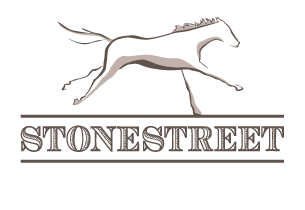Standing on the rail at any racetrack paddock will give you a view of horses preparing for their race. Walking into the paddock, the horse will be wearing only a bridle. In the saddling area, which can either be in a designated walking area or in a stall, the valet arrives with the tack which is then fastened to the horse. Once the tack is in place, it’s riders up and onto the track.
Tack is the equipment used to ride a horse and comprises of the saddle and bridle with their components. Every rider, whether they are heading out for morning works or to the paddock for race day, tacks up.
The components of TACK:
-
Bridle: the headgear used to control a horse’s movement and direction through the use of a bit and reins
- Headpiece: a component of the bridle that is made of leather and goes across the head to secure the bridle
- Noseband: a component of the bridle that is made of leather and goes across the nose to secure the bridle
- Bit: a mouthpiece that is most commonly made of metal, but can be made of other materials including rubber and plastic (There are several hundred varieties of bits)
- Martingale or Yoke: leather strip that connects to the reins and girth that gives the rider control over the height of a horse’s head
- Reins: Long straps that attach to the bit and thread through the martingale rings. The rider holds the reins in their hands to guide the horse.
- Saddle: a seat that is fastened to the back of a horse on which a rider sits
- Girth: a wide strap that goes across the horse’s barrel and keeps the saddle in place by attaching to both sides
- Irons: metal pieces attached to the saddle using leather strips that a rider puts their feet in
- Leathers: the leather strips that attach the irons to the saddle
- Saddle Pad: a foam pad that sits between a horse’s back and the saddle to provide comfort to rider and horse a
There are many different materials used for tack, but leather is the most common. In a training operation, each rider is responsible for their own tack. To extend the life of tack, cleaning and conditioning is carried out daily.
A “tack room” is a small room located in most barns that houses the tack allowing each rider to organize and care for their tack. Tack rooms also store cleaning supplies and specialized or spare tack.
It is important that each piece of tack is fastened correctly for the safety of rider and horse. For example, a girth that is not tight enough could mean the saddle slipping while a rider is up. Tack is universal across all horse disciplines, but has some variation. With several different types of martingales, several hundred bits, and even more bridle combinations, the perfect tack combination can be made for any horse.
